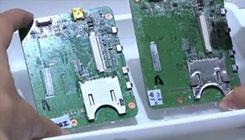by Gabriela Jugaru  Dropping your smartphone into the water, spilling your coffee on it or worse yet, having to fish it out of the toilet bowl happens on a regular basis. For the people that own them it can mean the end of the world, especially if you're one of those who carries your life around on it.
Dropping your smartphone into the water, spilling your coffee on it or worse yet, having to fish it out of the toilet bowl happens on a regular basis. For the people that own them it can mean the end of the world, especially if you're one of those who carries your life around on it.
As some people would rather cut off their leg (not really) than part with their smartphone, there have been many attempts at creating products to help dry out your device. Although a bag filled with uncooked rice is known to do the trick, a variety of portable kits can act as first aid when you've inadvertently committed a drowning. These methods may or may not work, so it may help to know that Daikin Industries recently designed something to save your smartphone from the water. It's a super-hydrophobic film that waterproofs the circuit board.
 Dropping your smartphone into the water, spilling your coffee on it or worse yet, having to fish it out of the toilet bowl happens on a regular basis. For the people that own them it can mean the end of the world, especially if you're one of those who carries your life around on it.
Dropping your smartphone into the water, spilling your coffee on it or worse yet, having to fish it out of the toilet bowl happens on a regular basis. For the people that own them it can mean the end of the world, especially if you're one of those who carries your life around on it.
How It Works
Daikin’s super-hydrophobic transparent coating is aimed at both OEMs and smartphone users. The coating consists of fluoropolymer film immersed in a fluorinated diluent. Fluoropolymer film is a base material produced in different types, including Neoflon PFA, which is chemical resistant for semiconductors; Neoflon FEP, which is heat resistant; and Neoflon PCTFE film, which has superior moisture resistance and is transparent and resistant to chemicals. This is the type of fluoropolymer that's used to protect your smartphone's circuit board. It's typically used in pharmaceutical packing.How It's Used With Smartphones
Until the product is officially released for use with smartphones, the product is commonly called Daikin Dip. You submerge the entire circuit board in the clear solvent, which is fluorinated and contains fluoropolymers that have been dissolved to create a very thin coating without affecting the board's functionality. You only leave the circuit board in the solvent for a short period of time. Once it's removed, it only a minute or so for the film to dry, sealing it from moisture. Since the coating's so thin, it won't add additional bulk or weight to your phone. This is important to remember, since OEMs are constantly making an effort to pack more punch into smartphone technology without the bulk.[youtube http://www.youtube.com/watch?v=_FwjFj3Ku5k&wmode=window&h=315&w=640&h=360]



